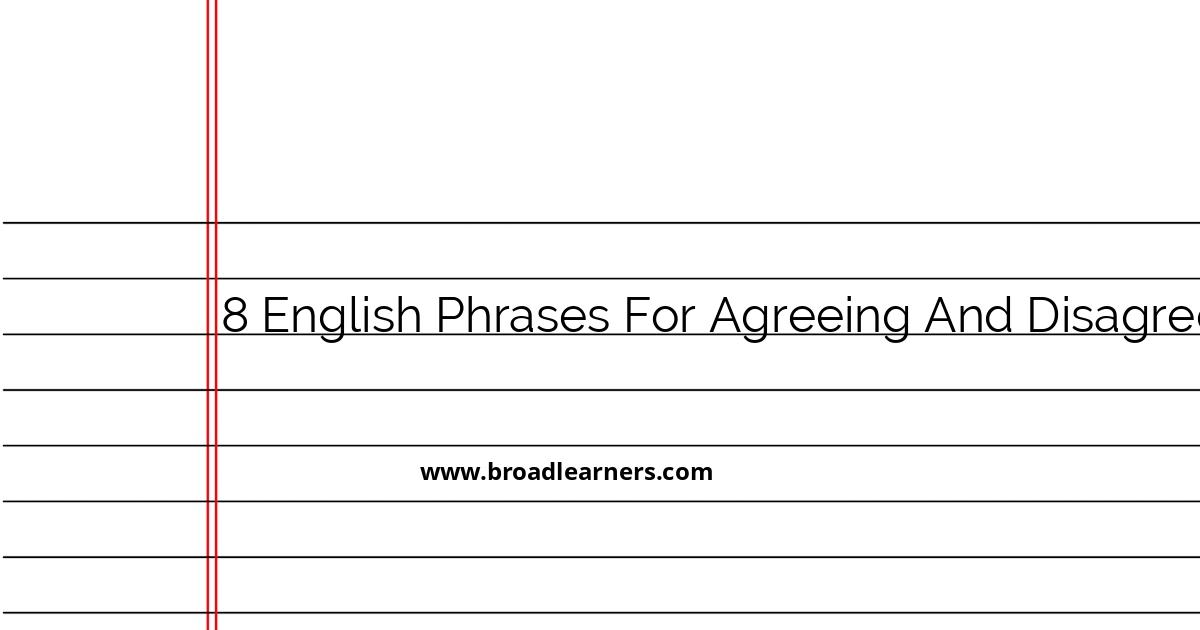Having the ability to agree or disagree politely and effectively is a significant skill in both professional and everyday conversations. In this article, we introduce 8 common English phrases used for expressing agreement or disagreement. We will also provide detailed explanations and examples to help you understand and use them appropriately.
Agreeing Phrases
- Absolutely
- Exactly
- I couldn't agree more
- That's so true
1. Absolutely
The word 'Absolutely' is a strong way to convey full agreement with a statement. It emphasizes your total approval and support for what someone has said.
Example:
Friend: 'The new policy at work is really beneficial.'
You: 'Absolutely, it's exactly what we needed.'
2. Exactly
'Exactly' shows complete alignment with someone else's viewpoint. It signifies that you see things in the same way they do.
Example:
Colleague: 'I think launching the project next month is optimal.'
You: 'Exactly, the timing couldn't be better.'
3. I couldn't agree more
This phrase implies that you are in full agreement with the speaker. It is a polite way of showing strong concurrence.
Example:
Supervisor: 'Continuous improvement is key to our success.'
You: 'I couldn't agree more, it's essential for growth.'
4. That's so true
By saying 'That's so true,' you acknowledge the truthfulness or correctness of the speaker's statement. It is a casual yet meaningful way to agree.
Example:
Friend: 'Reading every day has improved my vocabulary.'
You: 'That's so true, I've experienced the same benefit.'
Disagreeing Phrases
- I'm not so sure about that
- I see it differently
- Not necessarily
- I have to disagree
1. I'm not so sure about that
This phrase is a gentle way of indicating uncertainty or disagreement. It opens up room for further discussion or clarification.
Example:
Friend: 'Social media is the best way to market the product.'
You: 'I'm not so sure about that; I think email campaigns are more effective.'
2. I see it differently
'I see it differently' is a respectful way to express a different perspective. It suggests that you may have an alternative viewpoint without directly contradicting the other person.
Example:
Colleague: 'We should reduce the budget for marketing.'
You: 'I see it differently; I believe marketing is crucial for growth.'
3. Not necessarily
When you use 'Not necessarily,' you are introducing the idea that another conclusion or situation might also be possible, gently questioning the original statement.
Example:
Friend: 'If we cut costs, we'll automatically make more profit.'
You: 'Not necessarily, we need to ensure quality isn't compromised.'
4. I have to disagree
Using 'I have to disagree' is a straightforward yet polite way to articulate that you hold a different view. It is important to use in situations where you need to be clear about your disagreement.
Example:
Manager: 'The project deadline isn't a priority.'
You: 'I have to disagree; meeting deadlines is critical for maintaining client satisfaction.'
By mastering these phrases, you can effectively communicate your agreement or disagreement while ensuring clarity and maintaining respect in your conversations.

Did I miss anything? Respond below